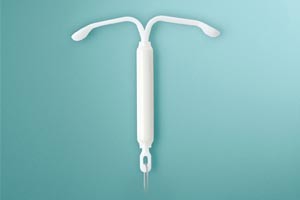
An intrauterine device (IUD or coil) is a small, often T-shaped birth control device that is inserted into a woman’s uterus to prevent pregnancy. IUDs are one form of long-acting reversible birth control.
Among birth control methods, IUDs, along with contraceptive implants, result in the greatest satisfaction among users. Evidence supports effectiveness and safety in adolescents and those who have and have not previously had children. Once removed, even after long-term use, fertility returns to normal rapidly. Failure rates are about 0.8% with copper devices and 0.2% with hormonal (levonorgestrel) devices in the first year of use.
While copper IUDs may increase menstrual bleeding and result in more painful cramps, hormonal IUDs may reduce menstrual bleeding or stop menstruation altogether. Cramping can be treated with NSAIDs. Other potential complications include expulsion (2–5%) and rarely perforation of the uterus (less than 0.7%). IUDs do not affect breastfeeding and can be inserted immediately after delivery. They may also be used immediately after an abortion.
The use of IUDs as a form of birth control dates from the 1800s. A previous model known as the Dalkon shield was associated with an increased risk of pelvic inflammatory disease; however, the risk is not affected with current models in those without sexually transmitted infections around the time of insertion.
Copper
Mirena


